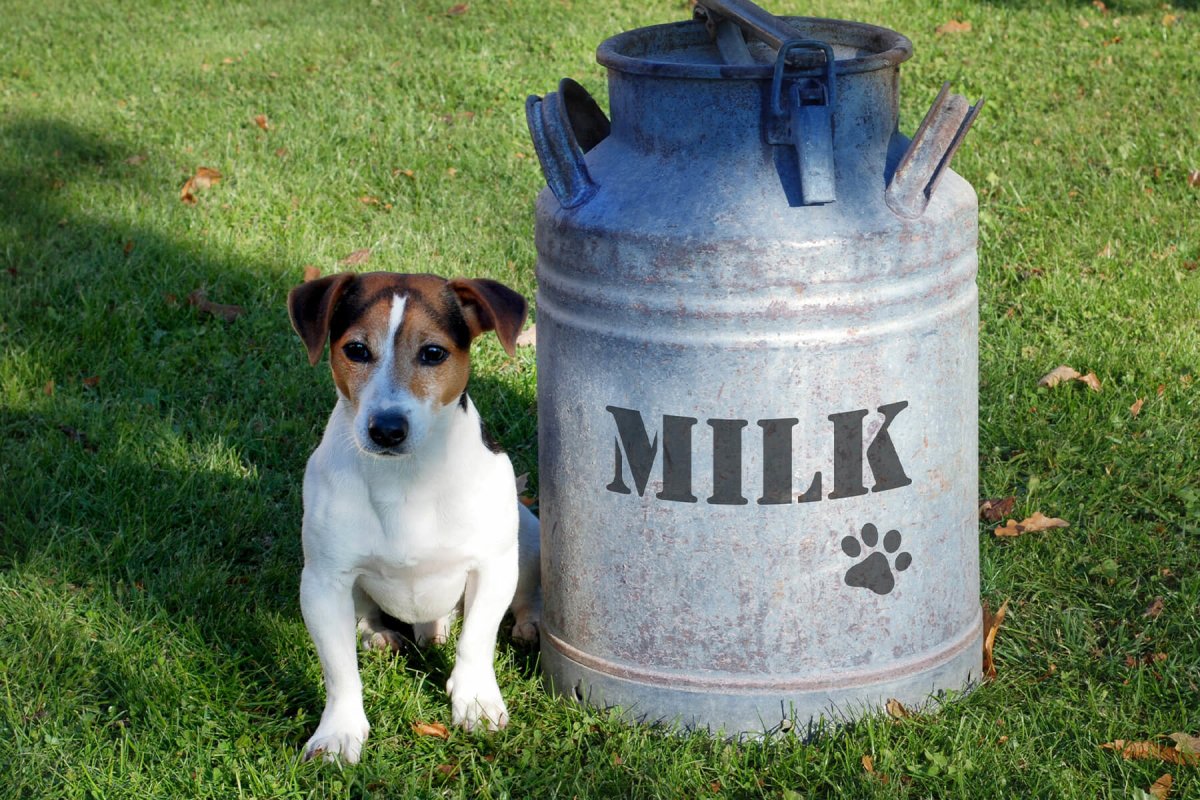Have you ever asked yourself why dogs tremble? Sometimes even for no apparent reason? We got to the bottom of this question and present ten situations in which our four-legged friends start to tremble.
1. fear - the most common trigger
Trembling in dogs is the most common sign of anxiety and can be triggered by situations such as
- sudden stress
- new, unfamiliar surroundings
- a visit to the vet
- the firecrackers on New Year's Eve
Dogs show their emotions through physical reactions such as trembling. We need to help our four-legged friends to be more relaxed and calm at such times.
But what exactly can we do?
Fortunately, we don't necessarily have to resort to medicines, which are often expensive and not natural. Quite simply, nature has a solution for this
Calming herbs such as
- Valerian - helps with nervous tension or anxiety
- Hops - has an antispasmodic and calming effect
- Lemon balm - has a relaxing and antiviral effect
- Passion flower - relieves tension
- Bach flowers - alleviates anxiety and stressful situations, e.g. on New Year's Eve
From valerian to passion flower, these calming herbs find their way into the Calm & Relax powder for more inner peace in a natural way.
It is also very important for dogs to be close to their caregivers when they are anxious. Although he should not be encouraged when he is trembling with fear, he should not be completely ignored either. It could even get worse if the four-legged friend receives no support in this situation.
NEW!
If you're in a hurry and need a little reassurance on the go, our Relax Snack is a tasty snack to be there for your dog in new, unfamiliar or stressful environments.


2. tail wagging, barking and trembling - an expression of joy in dogs?
The dog wags its tail, barks and trembles when it greets its owner. What many dog owners identify as joy in their four-legged friend is actually just excitement. This can be positive, as in the case of greeting, or it can also manifest itself as negative excitement. In both cases, the dog shows similar physical reactions such as trembling. If the four-legged friend is also stroked and given a treat, this motivates him to repeat the same behavior again and again. Therefore, be careful not to give your dog too much attention during "joyful" trembling.
3. trembling during sleep - processing intense experiences
Strenuous activities, excessive strain on muscles or particularly exciting experiences can also cause our four-legged friends to tremble briefly. This usually subsides after a few minutes. However, dogs can also process their experiences in their sleep, often twitching their legs or wagging their tails. One or two tremors can also indicate that they are processing intense experiences. If the trembling subsides after a few minutes, this reaction is completely harmless.
4 Dogs tremble when they are cold
Despite all the rumors and uncertainties: Yes, dogs also freeze and they also show this by shivering. Especially dogs that have little or no undercoat freeze faster than their naturally warm-coated counterparts. Typical breeds that tend to freeze in the cold and have little undercoat include the Chinese Crested, Havanese, Maltese, Yorkshire Terrier and Greyhound. A warm winter coat and plenty of exercise can help.

5. heat stroke - be careful in summer
Heatstroke in dogs is also accompanied by trembling. As dogs have hardly any sweat glands, the accumulated heat in the body is compensated for and is difficult to dissipate. Panting is the only way for dogs to cool down their bodies. If your dog suffers from heatstroke, it can tense up and tremble, among other things.
Other symptoms of heatstroke in dogs:
- Hasty panting
- Excessive salivation
- Gasping for air
- Glassy eyes
- Dark red gums
- Convulsions
- Diarrhea and vomiting
Dogs should never be left alone in the car in warm temperatures. A car can heat up to over 40 degrees from an outside temperature of just 25 degrees. Therefore, always remember not to leave your dog alone in the car in summer.
Strenuous exercise on hot days, extensive jogging or spending long periods in the sun without shade can also trigger heatstroke in your dog.
The first thing to do if you suspect that your dog has suffered heatstroke is to cool him down. Start by cooling the dog's legs with damp cloths and slowly work your way towards the thighs, back and stomach. Very important: The four-legged friend should also urgently drink some water. Once the symptoms have subsided somewhat, you should consult a vet.
6. age-related tremors - weakening muscles and joints
We humans are familiar with this: as we get older, our legs weaken, our muscles weaken and we are no longer used to exerting ourselves too much. This can sometimes lead to shaky legs. It's no different for our pets on four paws. Even an old dog has soft knees and should be given a rest from time to time. In addition, trembling in older dogs can be a sign of osteoarthritis. An extra trip to the vet can't hurt for senior dogs.
7. dog is in pain
Unfortunately, our four-legged friends cannot tell us what is bothering them and where they are in pain. They express this through physical signs. Trembling can be one such sign of pain. If your dog is in pain, there may also be other physical symptoms:
- rapid breathing and panting
- Loss of appetite
- Changed posture: arched back, tucked tail
- Excessive licking of the painful area
If you observe these symptoms in your pet, you should take him to a vet or veterinary practitioner. They can find out the cause and give your four-legged friend pain-relieving medication.

8. trembling as a symptom of fever
Does your pet seem exhausted, trembling and not touching its food? Then he may have a fever. A temperature between 38.5 and 39 °C is completely normal for dogs, unlike humans. Anything above this should be monitored. You can use a thermometer to quickly find out whether your dog has a fever and whether this is the cause of his shivering.
Elevated temperature and fever can have different causes, from an infection to Lyme disease. If your dog's fever does not subside after a short time, you should consult a vet.
9. poisoning in dogs
Malaise can often manifest itself as tremors in dogs. The four-legged friend feels bad, cramps up and vomits. This may indicate that your pet has been poisoned. Poisoning in dogs is not that rare. He just needs to have eaten something bad, ingested a poisoned bait or eaten poisonous plants for dogs.
Other signs of poisoning in dogs are
- Vomiting
- diarrhea
- fever
- drowsiness
- restlessness
- Increased salivation
- Blood in the feces and vomit
If you observe these symptoms in addition to tremors, you should go to the vet as soon as possible and have your dog examined. In cases of poisoning, every minute counts.
10. tremors and convulsions due to epilepsy
Dogs also suffer from epilepsy. However, a seizure in dogs is similar to a convulsion in humans and the dog is also unresponsive. If dogs only tremble, they can still react and perceive what is happening around them. Epileptic seizures are slightly different. There is a strong excitation of the nerve cells in the brain and the dog begins to convulse. Dachshunds, poodles, boxers and German shepherds are prone to epilepsy. The disease usually breaks out for the first time between the ages of 1 and 5, but can be limited with the right medication.
At a glance - Why do dogs tremble?
Dogs tremble for a variety of reasons. This physical reaction in our four-legged friends can have both harmless and serious causes. If you're not sure why your dog is trembling, it's best to talk to your vet. They will be able to assess your dog's situation better.
Reasons why dogs tremble:
- Dogs freeze and this manifests itself in trembling
- The dog is afraid
- It suffers from illnesses such as epilepsy
- The four-legged friend has been poisoned
- He is showing signs of heatstroke
- Dogs also tremble with excitement, both positive and negative
- An old dog also tends to tremble
- The four-legged friend is in pain and expresses this by trembling




